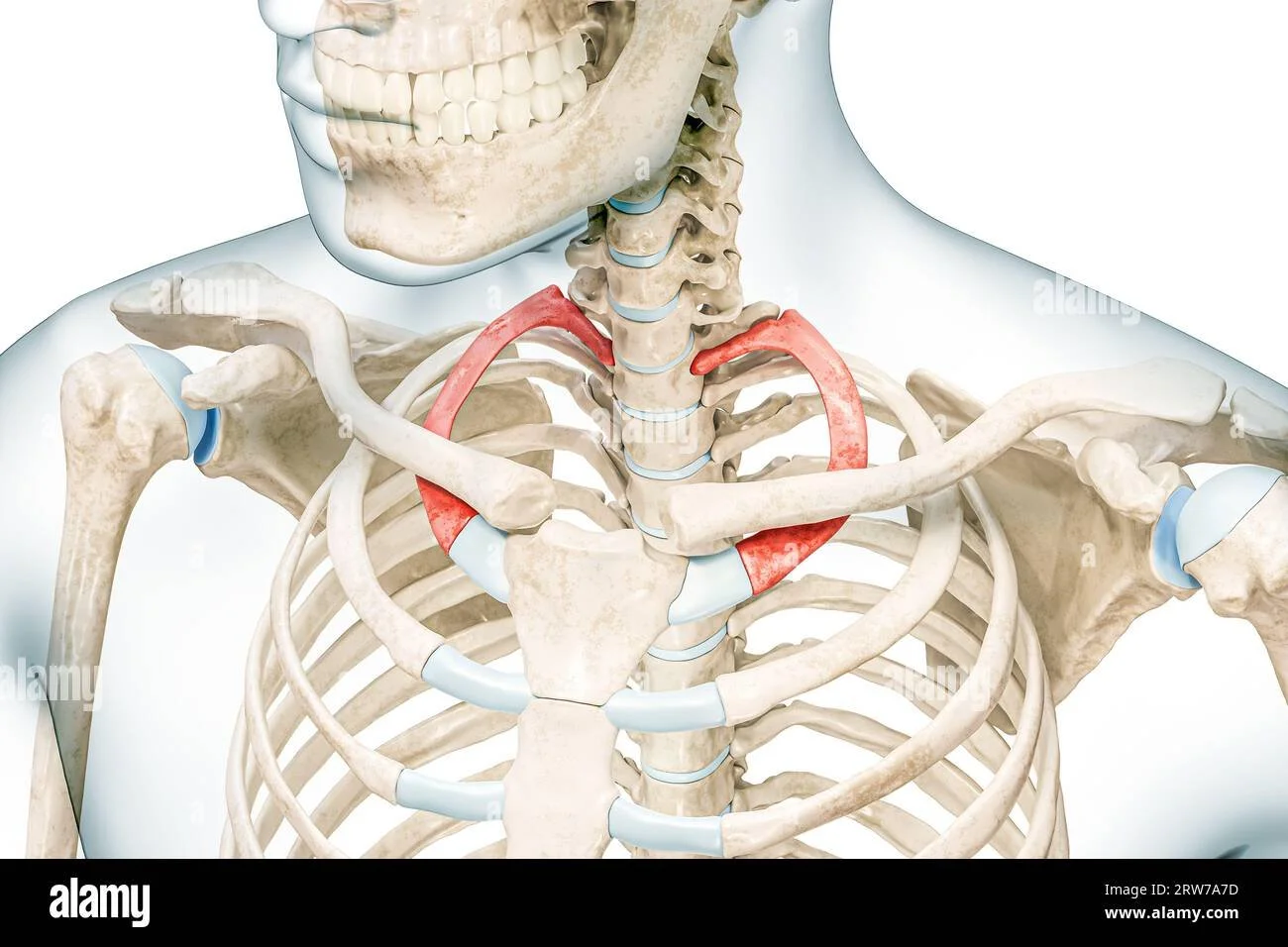First Rib
Notice the intrecacy at the sterno-clavicular notch. The first rib is attached to the first vertebra in an unmovable joint. It is interesting to think of this as THE shoulder joint with the whole rest of the shoulder girdle floating loosely around the upper torso.
The first rib creates the only fixed place for the entire shoulder girdle system and oooh is it fixed! The shoulder blades float and the clavicles hang. In tensegrity terms, the parts of your shoulder joints don’t so much make a ‘locked kiss’—the way, say, the ball and socked of your hip does—as a butterf[y touch. The shoulder joint parts just touch up against each other, never nailed down. It is only the first rib that forms a complete anchor at both ends - in the back to the top thoracic vertebra (that big knob at the base of your neck) and in the front to the sternum at the thoracic inlet. All the other ribs have moveable joints in the back. But not the first rib. This attachment of the first-rib-necklace creates a stiff foundation that everything must organize around. When the first rib becomes restricted or elevated, the entire floating apparatus of shoulders, arms, and neck has to compensate. This has a profound effect on the at least two diaphragms— the breathing diaphragm at your lower ribs and the diaphragm near the notch of your collarbone.. The scalenes attach directly to this necklace, so if they have chronic tension, it literally pulls the shoulder girdle upward, messing with the breath and the neck and the head and the thoracic outlet and the pressure on the vagus nerve and your self-management of the pressure gradient from the little hammocky diaphragm at the base of your brain all the way down to your anus… and the everything. Your thymus. They are all implicated. And when the first rib comes unstuck, it feels so good.


